Including Introverts
October 10, 2022
About 25% to 40% of the population can be classified as an introvert, according to simplypsychology.org. With such a statistic, it’s surprising how many classrooms continue to favor learning styles that almost entirely benefit extroverts.
“Introverts are people who generally find more stimulation inside of themselves,” stated Marlene Hines (she/her), Millikan AP Psychology teacher. The same website as above identified an introverted personality as best suited to independent work where you can develop your own ideas. Extroverts on the other hand thrive by sharing and collaborating on ideas in groups.
I am not calling for an end to group work, but our classrooms are currently at an imbalance between the two. Group work teaches students to be more communicative, tolerant, and collaborative, but very often it is not carried out correctly leading to group census and smothering individuality. People frequently follow the most confident member, who is not always the best fit for the position.
“I prefer solo work, I can work at my own pace and focus on myself rather than others. I think I work quicker this way,” Gael Rodriguez PEACE sophomore stated.
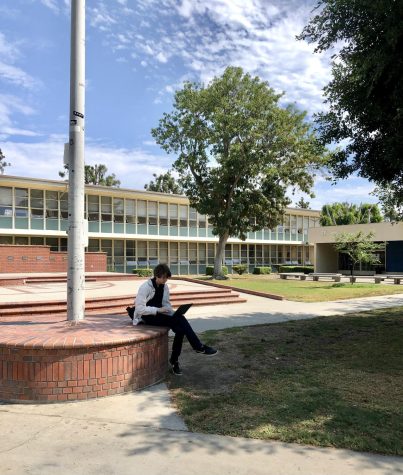
On the other side of this spectrum, too much individual work can be just as harmful to a student’s learning process. Too much alone time in the classroom deprives extroverts of the valuable aspects of group work such as collaboration.
“Sometimes I give menus of assignments so students will have an opportunity to choose their own product,” Hines said. “The students can just choose what they like. There are some that are definitely set up for my extroverts, and then there are some, like a drawing one for instance, that a lot of the introverts will choose.” This is a perfect accommodation that allows both personalities to get the most of their work.
Even if it’s just giving students time to collect their thoughts before coming together as a group, we need a better balance in the classroom. Introverts require their own space to gather their creative thoughts and be themselves. Extroverts require the opportunity to share and express themselves. If both of these requirements are met, the classroom can become a more inclusive environment with more productive students and more creatively generated ideas.





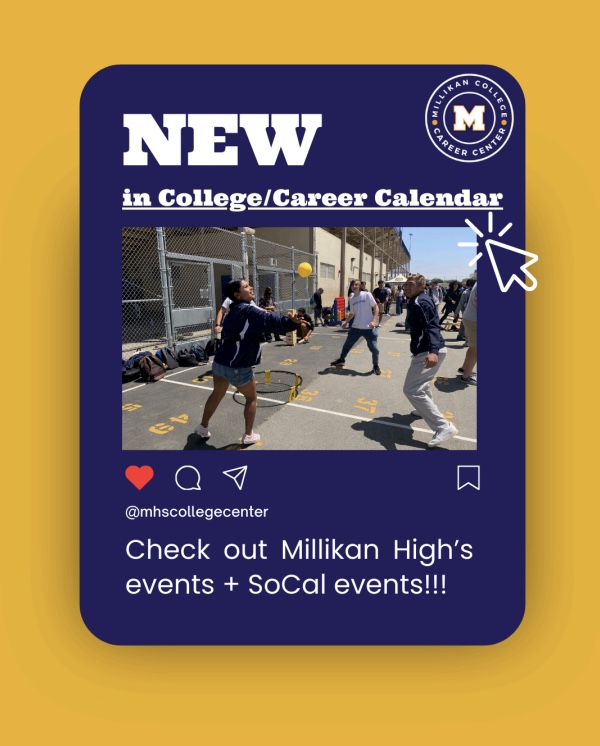


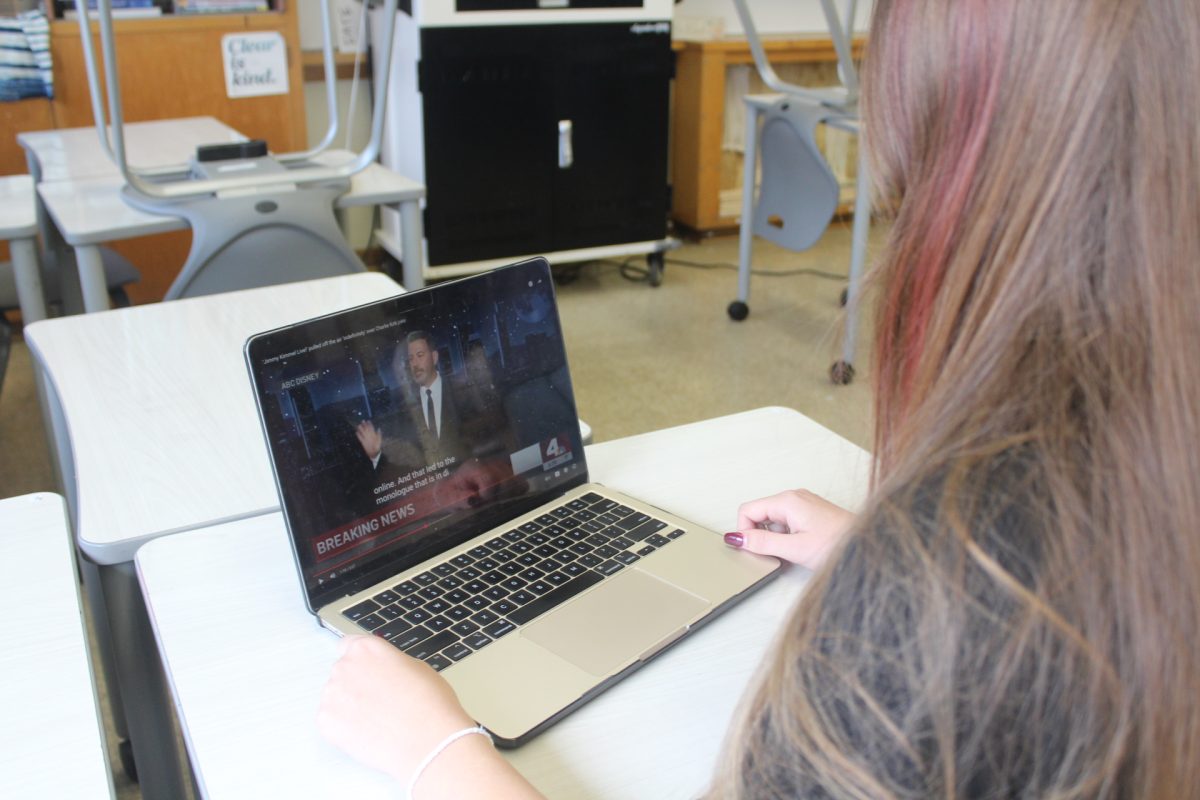


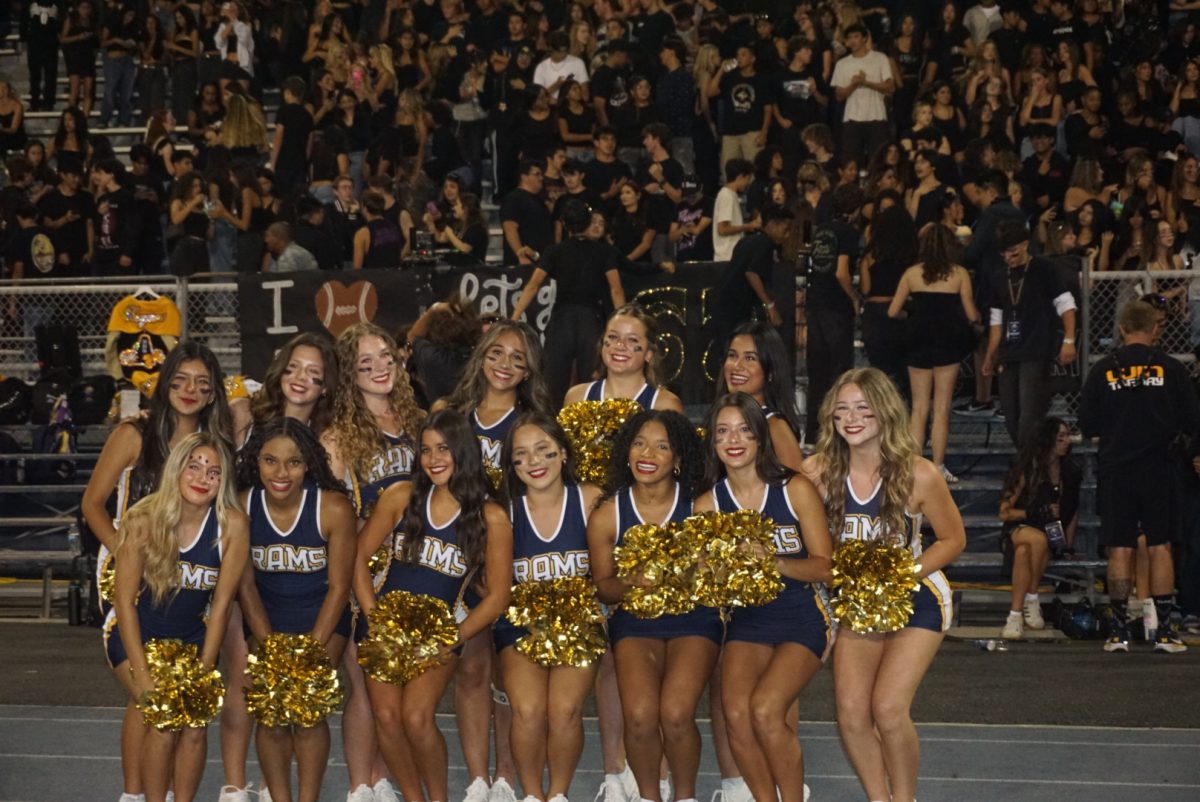

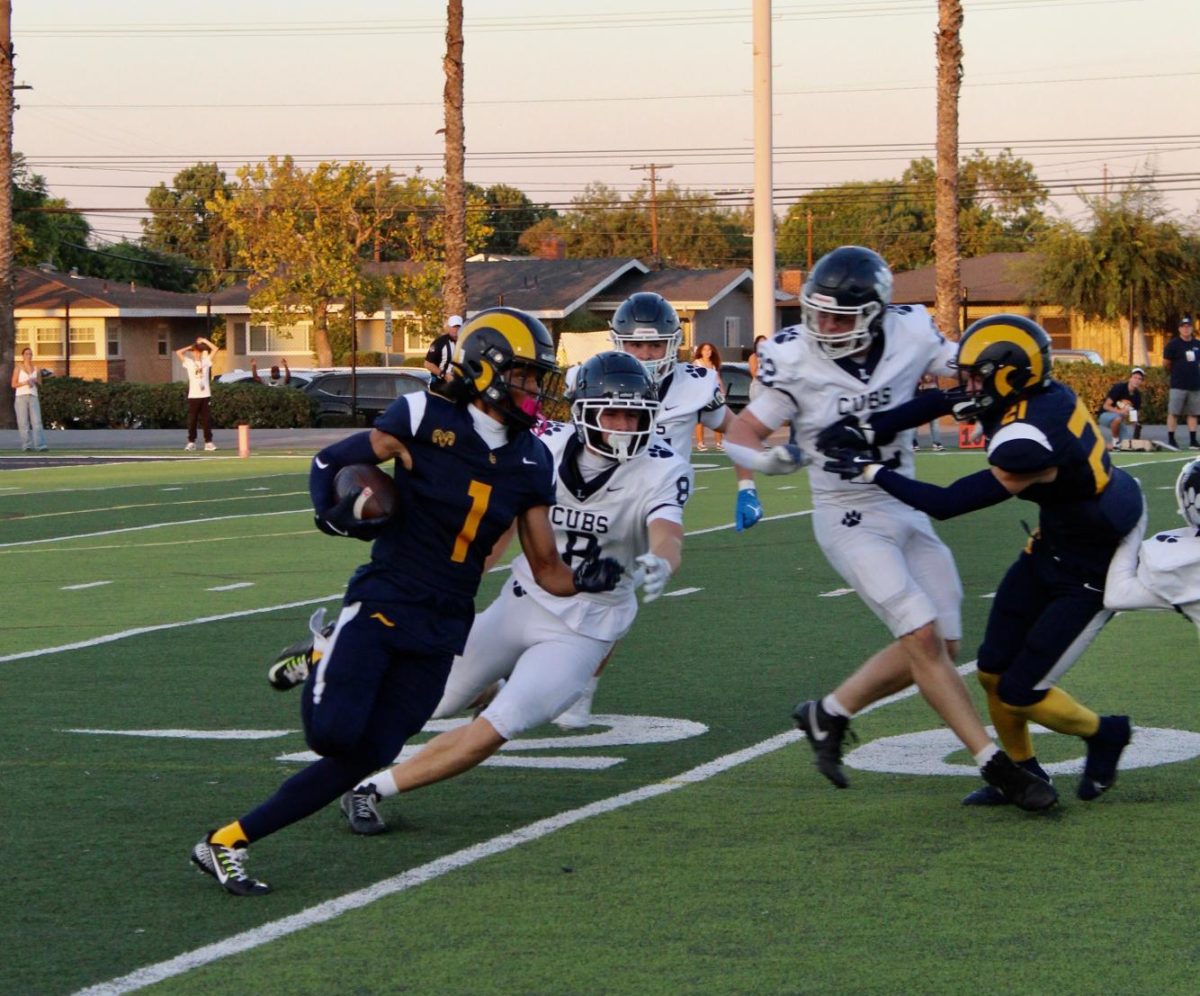






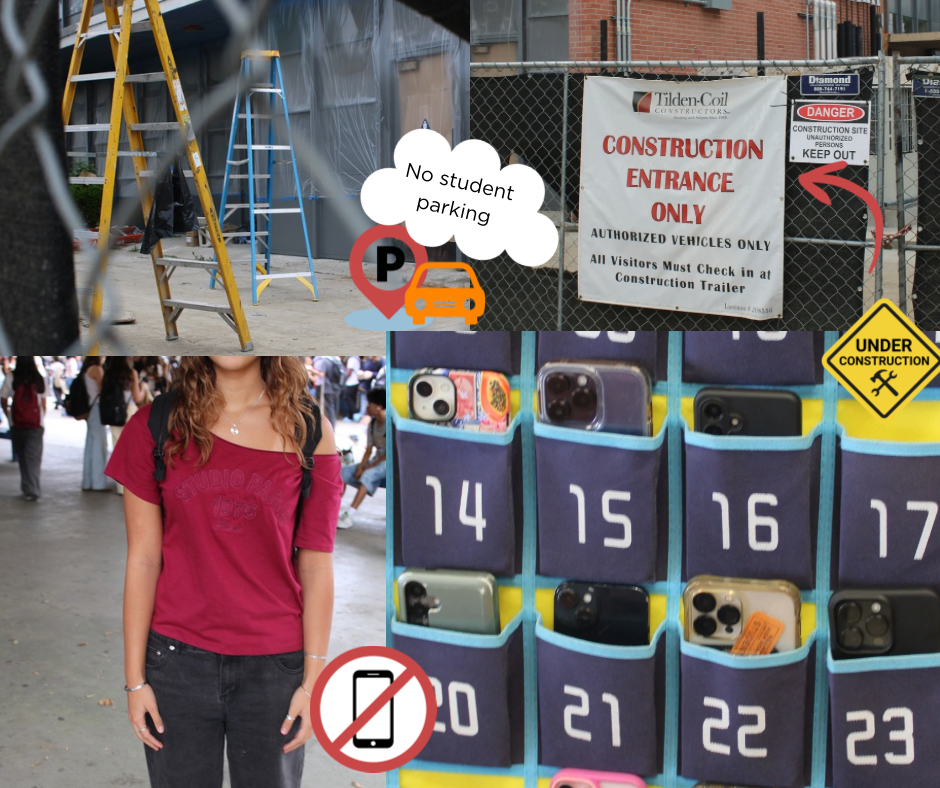


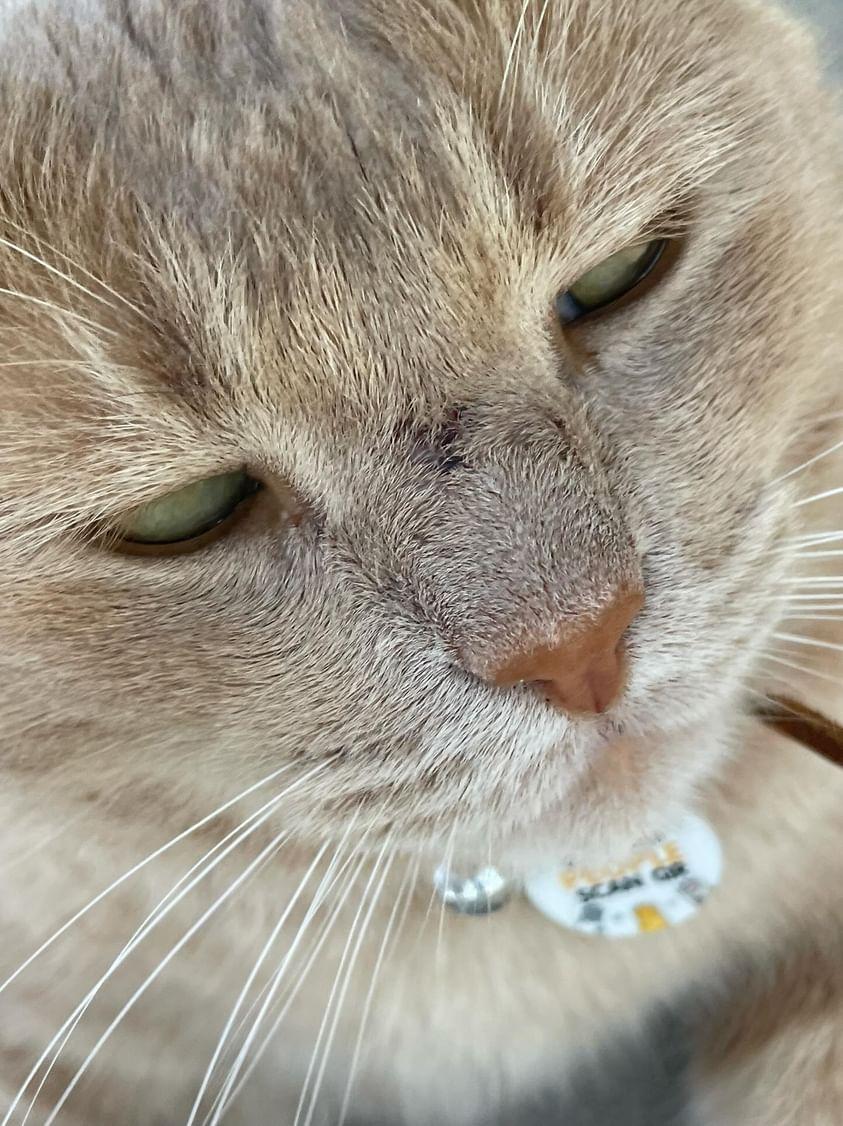

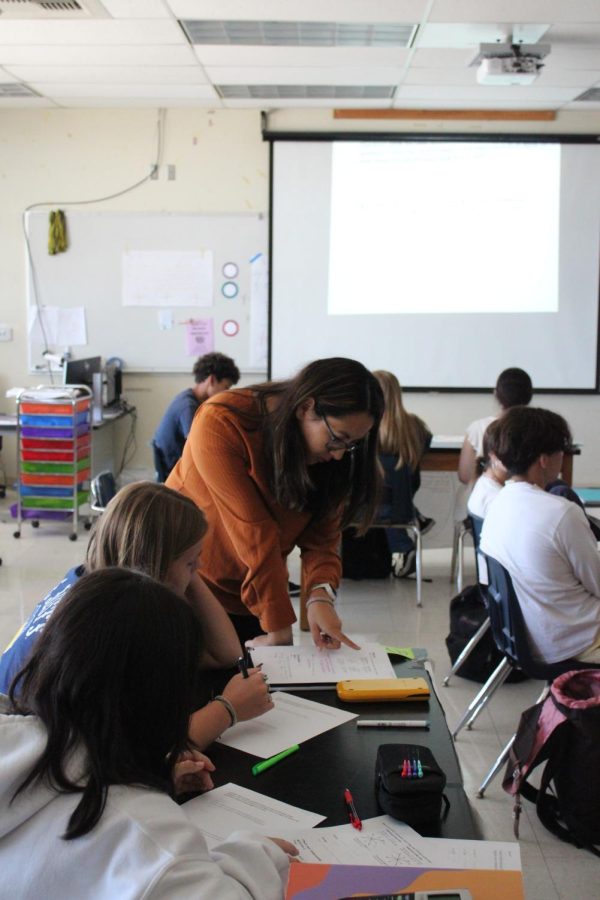






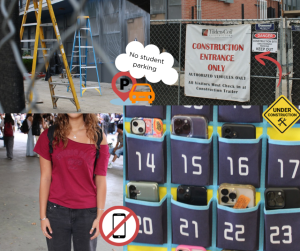

Bridget Ball • Oct 28, 2022 at 9:16 am
On October 10, Payton Miller wrote an article titled “Including Introverts.” This article speaks on the pros and cons of different working methods, and who they may be beneficial to. Before reading this article, I didn’t take the time to think about how introverts may feel when working in a group setting. I understood that most individuals who fall into this category are on the quieter side, but I never really put into consideration how they feel when working with others. The article also mentioned that too much working alone can be destructive to students learning process. A teacher had proposed a solution, which was to give the students a choice between individual or group assignments, which seems like a smart idea, but if students are always given the choice, wouldn’t they just stick to the method of working they prefer to use rather than going out of their comfort zones? I understand giving students a choice to help their comfort, but in the real world we are going to have to step out of our comfort zone whether we like it or not, so I think it’s best to prepare students ahead of time. All in all, it was a good solution, and I can see where the teacher is coming from with this point of view, and I am glad I got to learn more about how students on the introverted side may feel about collaborative work, thank you.
Madeleine Napalan • Oct 26, 2022 at 8:48 am
On October 10, Payton Miller wrote an article called “Including Introverts.” This article mentions how the classroom right now is set for extroverts to strive in rather than introverts. This article gives a really good example of a teacher already making their classroom a more open and free space to choose what you do by having the option to pick what thing you want to do for an assignment, some made for introverts and some made for extroverts. Before reading this I never really thought about how some classes are based on the idea of group work and working with other people to get something done. I feel like teachers do put you in groups though to try to make you talk to others because if given the option over and over again, most would work by themselves, and by making you work in groups it makes you step out of your shell a little. How many teachers do you think even realize they are making their assignments extrovert friendly? How many kids do you think feel this way, but don’t say anything? In this, I think you could also add how much anxiety it gives a person to have to pick their groups because sometimes they don’t know anyone in the class. I think another good addition to add to this is way more personal experiences/anecdotes from kids.
Natalie Ceja • Oct 21, 2022 at 2:01 pm
On October 10, Payton Miller wrote an article titled “Including Introverts”. The article challenges the widely held belief that group work and learning is the most effective method for everyone in school, but this method mostly benefits extroverts. It does not take into account how many people are introverts. The article states that about 25-40% of the population identifies as an introvert. She suggests that allowing children to engage in autonomous learning may be more advantageous than forcing them to work in groups all the time. To support her claim, she quoted some students who said they would rather work independently. She also points out that because extroverts perform better in the situational learning setting that most classes adhere to, they are frequently the center of attention; the author claims that they aren’t always the greatest choice for the role. We must make adjustments to account for the diversity of the students in the class, as mentioned by the author, “I am not calling for an end to group work, but our classrooms are currently at an imbalance between the two”. To support her claim about adhering to both groups, she interviewed one of the Millikan AP Psychology teachers, Marlene Hines, in order to give an example to other teachers in order to find a balance between the two. I suggest also writing that teachers should give the option to students if they would rather work in a group or individually. Independent study can help introverts but deprive extroverts of social engagement, as the arctic noted. But it also emphasizes how an environment conducive to group learning would favor extroverts while occasionally excluding or impeding introverts from studying at their own speed.
Catherine Gentry • Oct 21, 2022 at 1:58 pm
On October 10, Payton Miller wrote an article titled “Including Introverts.” The article mentions that the styles of learning being utilized in classrooms almost entirely benefit extroverts rather than introverts, illuminating the urgency of implementing a greater balance of learning styles in the classrooms. The issues presented in this article resonate greatly with concerns of my own. For introverted students like myself, it is difficult to share opinions during group work, often leading to the smothering of individual opinion. Additionally, I find the statement on solo work very intriguing because in addition to being able to work at my own pace and not having to focus on others, independent work also allows my work to reflect my own thoughts rather than those of others. An additional piece of information I would include is the depletion of energy on introverted students during group collaboration. Group work can be strenuous for introverted individuals, conceivably decreasing their academic performance for the rest of the day. This article left me with a few questions. What are some examples of independent work beyond individual worksheet assignments? How can a teacher assign a ‘menu of assignments’ and then add it to the cumulative gradebook if the assignments are different? Should accommodations be made for those who experience great stress in social situations? Miller’s argument about inclusion of introverts brings light to changes required to make classrooms more inclusive, however, are teachers willing to make these changes in their classrooms? Miller’s article does a great job explaining the issue and I hope a greater discussion about this topic will surface.
Sophia Brown • Oct 21, 2022 at 1:53 pm
On October 10, Payton Miller wrote an article titled “Including Introverts” The article mentions the imbalance between group work and working individually. Although group work can be harmful to introverted students who find stimulation within themselves are more productive working alone, many teachers are pushing collaborative work because of the many benefits such as expressing yourself, experiencing new ideas, meeting new students, and taking a topic into more depth. I appreciate how you included both sides of the argument because it allows for us to understand where teachers are coming from while also realizing that this imbalance in learning styles needs to be addressed for the benefit of all students. You mention in the article that “introverts require their own space to gather their creative thoughts and be themselves.” I’m curious if there are ways we can implement this better into classrooms such as creating quiet spaces with chairs set up separate from other students to grant space in a way that is more conducive to their learning requirements. In classrooms where the desks are set up in rows, introverted students may get overwhelmed more easily and this space would significantly help that.
Hawking Crouther • Oct 21, 2022 at 11:55 am
On October 10, Payton MIller wrote an article titled “Including Introverts. “ The article describes the large percentage of introverts that experience more extroverted assignments during class. MIller argues that this prevents the full development of their ideas and there should be a change of this common learning structure. She mentions a lot of good points and I would like to emphasize the one where she states how group work doesn’t create as much communication as it should. Many times when an introvert is put in a group situation, they mainly focus on pleasing everyone else in the group and just listening to what they are told to do. Also, any ideas that they have, they feel like it would be unnecessary, or rude if they share their ideas to the group. Another thing that I think should be mentioned is the responsibility that is put on students when assigned group work. Nobody wants to be the kid who caused a bad grade, or did not pull their weight. To an extroverted student, situations like this are used as motivation which is good, but to a more introverted student, it can apply pressure that they aren’t prepared for. Like MIller says, too much of one side isn’t good either, but we need to find this balance in classrooms, so that all students are being catered too fairly.
Jamie Do • Oct 21, 2022 at 11:55 am
On October 10, 2022, Payton Miller wrote an article titled “Including Introverts”. The article mentions the different dynamics and personalities that are within the class. The article acknowledges the imbalance between introverts and extroverts, and advocates for inclusivity within a classroom as a way to support students. I agree with the ideas that you mentioned and I’m glad that someone is taking a step forward and bringing this issue up. I like that you mentioned how different students work and that some are stimulated while working alone and others are stimulated when working collaboratively. I like that you aren’t trying to remove group work as a whole, but giving different options that meet the requirements of every student. I find it very interesting to see how different people work and how different settings may drain or energize a person. I like that you aren’t only advocating for inclusivity, but also balance. I agree that every student, regardless of being an extrovert or introvert, needs to learn to work alone and to work collaboratively. Another topic I liked in your article was that group work may not be as efficient as independent work because it might not be carried out correctly. It’s nice that you mentioned this because I can relate to this and I feel like most people may have experienced a situation similar to that. Your article is very informative and thank you for speaking up about this issue.
Karma Phang • Oct 21, 2022 at 11:42 am
On October 10, Payton Miller wrote an article titled ¨Including Introverts¨ . The article mentions that 25-40% of the population are introverts. Despite this, many teachers continue to favor a teaching style that benefits extroverts. While introverts thrive during independent work and time to themselves, extroverts thrive with group work. Prior to this article, I wasn’t aware of the fact that many teachers usually prioritize group work. Including statistics and facts was a great way to show the credibility of your argument. Interviewing the AP Psychology teacher, Marlene Hines, also allowed you to gain a better understanding of introverts and how they work. It was also a great choice to talk about the problem of teaching styles that prioritize group work and then including a solution to it. In the article, there was also an argument that goes against work designed for introverts. Including an argument for both sides, allowed for people of both sides to be seen and widened your audience. It is understood that group work teaches students collaboration and communication, however it isn’t done correctly. Individual work may help introverts, but it also deprives extroverts of valuable aspects that are a part of group work. What are some other teaching styles or activities that include extroverts and introverts? What are some other disadvantages to each teaching style? Is there a difference in the chemistry of extroverts’ minds compared to introverts?
Vaughn Lawson • Oct 21, 2022 at 11:42 am
You created “Including Introverts” on Oct. 10 2022, and I really enjoyed reading your article. I strongly agree that including opportunities for other students that are not extroverts are a great goal for teachers to try and strive for. Not every student thinks and acts in the same way and it’s extremely important that teachers try their best to tailor to students’ mindsets so they can be highly successful in the classroom. Of course like you said we don’t want to completely eliminate group work, it would just be great if teachers gave multiple activities for students to do just as Hines said in your article. It might also be beneficial for teachers to assign more groups themselves when it comes to group assignments, as teachers could select different kids for each group whenever there is a project or group activity. This would allow more students and especially introverts to meet new people, and it would stop students from always choosing the same partners for group work which would possibly create more of a classroom community with multiple students knowing each other. And yes, too much individual work can cause students to not learn properly or it might affect how they learn negatively if that is all they do. So overall I really enjoyed reading your perspective, I agree with your arguments and opinions presented, and I hope you write more for the Corydon in the future.
Devon Fletcher • Oct 21, 2022 at 10:09 am
On October 10, 2022, Payton Miller wrote an article titled, “Including Introverts.” The article brings attention to the imbalance of extroverted and introverted learning techniques in classrooms. This is especially important given the statistics in the article, stating that nearly 40% of the population is considered an introvert. Granted, being an introvert does not mean directly that one learns best alone, but it is important to acknowledge those who do. Ms. Hine’s tactic of giving students the option to work in a style they wish is great; students may choose the option they learn best with and it presents a clear and apt solution for students’ different learning styles. If more teachers provided options, students could be better prepared for life after high school. It would allow students to explore learning techniques and learn how to get the most out of assignments. Moving into college and work environments, people would be better equipped with how to be productive. Even if a teacher assigns individual work, students who recognize that they learn better by bouncing ideas off of others, may form study groups before the big test. Those who are more introverted or get more out of individual studying may do just that. This is such an important topic with a simple solution that could change the future. This change could lead to a population of more understanding and productive individuals. Thank you for bringing awareness.
Nataly Poveda • Oct 21, 2022 at 10:01 am
On October 10, Payton Miller wrote an article titled “Including Introverts” The article touches on the subject of the lack of inclusion of introverted conscious activities. I praise this piece because it acknowledges a great issue across classrooms at Millikan. I appreciate the statistics right at the beginning of the article and it has left me wondering, how many students at Millikan, specifically, are introverted? I enjoyed the contribution of psychology teacher Marlene Hines. Her contribution provided a beneficial credibility to the article that provided further insight on introverted students. I would further confirm Mrs. Hines’ statement as a student in her class. I would say that she indeed provides work that balances between her introverted and extroverted students. I would agree that accommodation is necessary to ensure the success of both introverted and extroverted students. I believe that collaboration is necessary in broader terms of life but we must not forget that independence is also essential in life. We may need to work with our coworkers to reach a conclusion but occasionally we must seek ways in which we can independently enhance the work space. I appreciate the consideration for both parties. There is no extreme bias visible throughout the course of this article and I commend this perspective. This article provides a clean example of the importance of addressing the significance of including introverted activities in the classroom, but also acknowledging the need for group/extrovert conscious activities. I enjoyed reading on this issue and it is something that will have me paying close attention to how teachers run their classrooms. Thank you for the insight on this issue, it was a great read.
Klarisa Hernandez • Oct 21, 2022 at 9:57 am
On October 10, Payton Miller wrote an article titled “Including Introverts.” The article expresses the importance of acknowledging and paying close attention to introverts and how our learning environment should be thought about more. Using one of the Psychology teachers (Hines) was a great idea because she is one of the people on this campus that is super educated about this topic. At this time, I am taking AP Psychology with Mrs. Wells, and I think this topic is important because introverted students have to adapt to tasks that benefit extroverts most of the time, just like you mentioned. Considering the effects of student environments are so impactful, they should be thought about a lot more, including opinions from everyone. As a student who can be introverted depending on my mood/energy, sometimes all I want to do is complete work by myself. Working with others can be draining mentally and often exhausting. Conducting a survey on how we can better classrooms and our work environment might even help us get a better understanding of those who are introverted, and how we can include them. With this being said, what should teachers do to benefit the students who are more introverted? Thank you for shedding light on this topic.
Ashley Oelmann • Oct 21, 2022 at 9:55 am
On October 10, 2022, Payton Miller wrote an article titled “Including Introverts.” The article articulated how schools need to balance work assignments with both introverts and extroverts. According to the website Ms. Miller used, introverted personalities are best suited for independent assignments where they develop their own ideas. As an ambivert (a personality balance between both introvert and extrovert), I like how Corydon covered an issue we all once or currently have in common. What one person may like isn’t always what the other person would feel comfortable with. The way Ms. Miller layed out her thoughts on group work as a whole to not put an end to group work, but to make it an option really makes the readers open their eyes to this very common issue. Even though it would very much be needed in our future professional lives, I would like to add on how after group work, teachers would ask us to “present it in front of the class.” I feel like instead of doing this, I personally like doing discussion questions and raising my hand to share my thoughts when I am comfortable with it. Whenever I’m standing in front of the class, no matter how much I prepare, I just blank out when it’s my turn to present. Another opinion I have is how teachers typically start the school year off with the class agenda, which I get, but we never got the time to introduce each other and know everyone in the class so we would feel more comfortable working together.
Kai Yamamoto • Oct 21, 2022 at 9:54 am
On October 10, Payton Miller published an article titled “Including Introverts.” One of the first things I noticed about the article is the two pictures. The first picture depicts a collaborative classroom where a teacher is helping a student and their desk partner. The second picture is of one student, isolated, with the caption at the bottom “A student works independently in the quad.” This immediately demonstrates a visual contrast between an extroverted vs. introverted student. The article starts off with a statistic from simplypsychology.org. You use this data to make her audience understand that most classes usually benefit extroverted students based on the type of learning style the teacher has. Later, you elaborate on the other perspectives an extroverted student may argue. This was a very smart decision, as to inform your audience on your understanding of both sides of the classroom. I believe the interviews made with Ms. Hines and Ms. Rodriguez was also very beneficial to your article. It showed that you’re not the only one speaking on this topic. One enhancement I might add, is to also have another student speaker on the extroverted side to be quoted in your article. You include lots of diverse opinions and reasoning in your article which is fantastic to convince your audience on the importance of balance in the classrooms. Well done, and thank you for giving 25% to 40% of introverts a chance to be heard.
Karen Coca • Oct 21, 2022 at 9:52 am
On October 10, Payton Miller wrote an article titled “Including Introverts.” The article uses statistics which really help the author’s argument, which is to have a healthy balance of individual and group work so as to not overwork the introverts but not to deprive the extroverts of communication with others. Being an extrovert myself, I understand that we sometimes come across as energetic and talkative which can easily drain an introvert. Although I do like talking, I, too, also have a social battery and I don’t like to talk all the time, which is why I do enjoy having independent work to relax and collect myself. I do agree with Miller’s argument about how we should have a healthy balance between group work and independent work so as to satisfy both parties. The method that Hines uses is one that I really like since it benefits both parties so no one is left out. However, there is another side to this, for example, some people may argue that working in groups helps with communication and people skills. Although this is the case it can be harmful if overdone, since it can lead to introverts feeling left out or drained from all the communication. In conclusion, I completely agree with Miller’s argument since everyone could benefit from having the best of both worlds.
Emarie Garcia • Oct 20, 2022 at 3:35 pm
October 20, 2022
Dear Corydon Editor
On the 10th of October, staff reporter Payton Miller made an article titled
“Including Introverts” that debriefs on how students, both introverted and extroverted, seem to require different learning styles when being taught in a classroom. Before analyzing the article, it is easy to say that I, an introverted Junior, feel deprived of my own independent work time in certain fields of my classroom. While this has been mentioned, I am both interested and invested in the ideas that have been introduced in this article. WIth this kept in mind, I have a few questions regarding how we can incorporate such ideas into each of our classrooms to elevate each and every students’ learning opportunities. Do you think there is a way we can further take a look on how this is affecting each individual student? Do you think we can accelerate these ideas and make surveys for students district-wide to take a wider look on students’ preferences? I regard this article as something that can make a difference throughout classroom experiences, and I would like to thank you for introducing this idea for people like me to see.
Sincerely,
Emarie Garcia, Grade 11
Jewel Kennedy • Oct 20, 2022 at 1:57 pm
On October 10, Payton Miller published an article titled “Including Introverts.” The piece had several insights on the introvert perspective. One point that was mentioned was how introverts work better with individual work rather than group work. This was supported by the AP Psychology teacher, which increases the reliability of the article. Additionally, many articles in general do not consider the other point of view, which comes across as disingenuous. However, this article does. While more individual work is suggested, the article explains that group work is still necessary because extroverts benefit from it. By also mentioning the other side, even extroverts who read the article feel represented.
The article also takes it a step further and proposes a compromise that can be made between introverts and extroverts. This compromise is that students should be given a choice in how they complete their work, whether it be in groups or individually. Not only is this solution plausible, but it makes the article sound even more superb. As a result, I have no suggestions for the editor. The last thing I want to say is that I appreciate how the article shares the struggles of a sizable portion of the school. Suggesting ways to accommodate more students will benefit Millikan as a whole. Being an introvert myself, I am grateful that this piece was published because I feel like I have more of a voice.
Claire Wilson • Oct 20, 2022 at 1:56 pm
Oct 20, 2022
Dear Corydon Editor,
On October 10, 2022, Payton Miller wrote an article titled “Including Introverts“. This article really spoke to me as an introvert. I don’t often see people wanting more independent work, for they mostly seem to be advocating for more group work. I like how you explained both sides of the story and how we can find a solution that benefits everyone. Even though I am an introvert, I can relate to both points of view. I like working with others and collaborating, and seating charts are more fun when we’re in small groups, rather than rows. However, what really stresses me out is group projects. Working with others for hours at a time is definitely not my style of learning and when school is already a hyper-social place, it’s just not fun. When I can’t work on my own, I feel like my ideas often slow down and I can’t get any real work done. On another note, I really admire your interview choices, and think that Ms. Hines was great. I was a student in Ms. Hines’ class, and I got to experience her method of teaching both introverts and extroverts. With her group projects, I didn’t enjoy them too much. But like she said, there were other instances where I got to draw and do what I wanted to do, rather than following others.
Sincerely,
Claire Wilson, Grade 11
Kevin Angulo • Oct 20, 2022 at 1:56 pm
On October 10, Payton Miller wrote an article titled, “Including extroverts” The article draws attention to the growing issue of the exclusion of introverts. This article holds great significance to me because I consider myself an introvert and I typically prefer individual classwork assignments. I find it awesome that she included quotes from an AP Psychology teacher that works here at Millikan, citations from an organization’s article, and even the opinion of an introverted PEACE sophomore here at Millikan. These various pieces of evidence tie in very well to her recurring theme of including introverts, for example the statistic she stated in the first paragraph that states “About 25% to 40% of the population can be classified as an introvert” this shows that some of them attend classrooms that solely benefit extroverts, leaving introverts in the dark which is a issue. Throughout the article she defends her claim about the need to include introverts while also defending extroverts and ways to keep them included also, this persuades the reader to support the issue. Towards the end of the article she says that schools need to find ways to benefit both introverted and extroverted students in a way that gives them a more productive and inclusive environment which shows her concern for the issue and the balance of both types of students. I enjoyed reading this article and thank you for drawing attention to this issue.
Jonah Gonzalez • Oct 20, 2022 at 1:55 pm
On October 20, Payton Miller wrote an article titled “Including Introverts”. The article mentions that although there is a high percentage of introverts, school assignments continue to present a learning style that accommodates student extroverts. Only having a basic common understanding of both psychology and statistics, I have a few questions, as I am not very versed in the topic presented. What is the population measured in your statement “25% to 40% of the population can be classified as an introvert”? Does this population only take into account student introverts? Where was this statistic’s data collected from? I appreciate your use of Gael’s and Mrs. Hines’ testimonies on the subject of preference, as they work to strengthen the points made in the article. Mrs. Hines’ presentation of offering assignment alternatives in the classroom is radical to traditional teaching, and I appreciate that she is making a change based on her students’ needs. I like that you stated her credibility as an AP Psychology teacher, confirming the validity of her statements on the subject of student introverts. After reading this article, I now think of how the work I am assigned in class may affect someone differently based on whether they are introverted or extroverted. Thank you for changing the way I think about how students interact with their assignments.
Valeria Mora • Oct 20, 2022 at 1:53 pm
On October 10, 2022, Payton Miller wrote an article titled “Including Introverts”. This article mentions how most work environments in schools benefit people who are extroverts rather than introverts. Later on in the article it talks about how extroverts also need to share their ideas to better situate themselves while introverts tend to collect their ideas by themselves. While balancing the classroom, it is beneficial if you let students decide on what type of work they want to do. Making students interact with one another can strengthen bonds, but many might not know their peers. Many students might feel excluded in the classroom and feel pressured to team up with other students they don’t know. This is why students tend to favor when teachers give you the option to either work independently or in groups. In a setting where you might not know your classmates all too well, it can make students feel more comfortable when they don’t put themselves in an awkward situation. While all of these benefit introverts, sometimes it’s okay to make students do partner work. When you sit next to someone in a classroom, there might be a chance that a bond forms just by close proximity. Close proximity between students can make way for opportunities for introverts to talk to someone they sit next to everyday while also benefiting extroverts who like to share their ideas with peers. All of these situations are benefits you can think about when finding better ways to make students comfortable!
Ashley Tem • Oct 20, 2022 at 11:59 am
On October 10, Payton Miller wrote an article titled “Including Introverts.” The article mentioned that group assignments can be made difficult for those who are introverted. I never realized how group work could cause distress to certain people let alone a vast amount of students. As an extraverted person I’ve always enjoyed group work so when I learned about how there are those who don’t enjoy it, it made me want to be able to make group assignments more enjoyable for others. My thought in making a group assignment more enjoyable for introverted students is that in a group assignment you could let some people work on their own while those who want to work together can. Miller brought up the ideas of Marlene Hines, the AP Psychology teacher, that to accommodate for both extraverted and introverted students there should be an option between group work assignments and assignments designed for individuals. I thought that was a great compromise because as someone who enjoys group work I would love to choose the group projects but this helps the introverted students because they tend to be independent workers. I know teachers would argue that group work is an essential part of life because when you are working in a group there are times where you are going to need to cooperate with your co-workers. Even though I would have to agree there can be a compromise made with the idea of partial cooperation. My idea to accommodate both extroverted and introverted students would be to have a group assignment where the students can bounce ideas off of each other but then after discussing they have the option to either continue working on the project together or to continue it independently. If the assignment is designed to be for multiple people the assignment could be modified for a single person by allowing them to not do as much work as the students working together. I found the article to be very interesting and informative. Thank you Miller for introducing me to what life is like as an introvert.
Jayla Walker • Oct 20, 2022 at 11:59 am
October 20, 2022
Dear Corydon Editer,
On October 10, Payton Miller wrote an article titled “Including Introverts.” This article offers input on how classrooms focus heavily on group work and extroverted activities, leaving a very limited amount of time for solo work that helps build individuality in many introverted students. As an introvert myself, I especially enjoyed how Miller included strong points from both sides of the argument by explaining the positive and negative effects of both independent and collaborative assignments among students. I found myself relating to both points. I would like to enhance a point that Miller brought up about the overwhelming confidence of one extroverted group member leading the group. While I agree that this can lead to an imbalance of authority in the group, it overall just depends on how everyone communicates with each other. From personal experience, I found myself able to contribute a lot to group work because despite being an introvert, I still hold that confidence trait that many extroverted students have. However, I understand that not all introverts are confident enough to carry their thoughts out loud. Communication between group members depends on their ability to work together and if they can’t establish that team work, that is when people most likely follow the most confident member. Furthermore, I especially liked Miller’s thoughts of a balance between introverted and extroverted projects within the classroom. Thank you for sharing your thoughts on the balance of group work and independent work among students.
Sincerely,
Jayla Walker, Grade 11
Sofia Arzola • Oct 20, 2022 at 11:59 am
On October 10, Payton Miller wrote an article titled “Including Introverts.” The article mentions that there’s an imbalance in our classrooms between extroverts and introverts where assignments are typically set up to favor an extrovert’s need for sociability, assertiveness, and talkativeness, need for reflection and peace in order to be most productive. As someone who sees herself as an extrovert and benefits best from collaborative work I’ve rarely paused to consider the disadvantages of group work and how it may impact other students. I felt that Miller’s article was eye opening as it allowed me to see the perspective of an introvert and to contemplate how our curriculum might be tailored to fit both the needs of extroverted students and introverted students. Miller mentions Mrs. Hines, Millikan’s AP Psychology teacher, provided occasional menus to her students allowing them to choose assignments that best benefit their needs. While I think this is a good starting point I wonder what else it might take for other teachers to make minor adjustments, as well as how this would impact their teaching. In some classes such as language classes it may be difficult to find assignments that fit introverted students because learning a new language requires a lot of speaking and interaction with other students. I agree with much of Miller’s argument, but I do wonder how plausible it would be to institute the changes needed to be more inclusive.
Madalena Gonzalez • Oct 20, 2022 at 11:58 am
October 20, 2022
Dear CoryDon Editor,
On October 10, Payton Miller wrote an article titled “Including Introverts” The article mentions that in collaborative groups, one person will always try to take charge. Miller mentions that the person isn’t always fit, but sometimes they can be helpful to introverts. Sometimes people that are introverts want to participate in collaborative work, but it can be more about how and when they say something or they don’t know how to go about doing that. Sometimes people that are extroverts help give them a chance to speak by asking what they think. There are some introverts that just need a little help to be able to talk to people and still feel comfortable. I agree that there should be more opportunities for introverts to be able to do individual work. Someone introverted should be able to do work and feel comfortable and not worry about having to talk all the time. For Miller’s first story, she picked an important topic to talk about. A classroom should never be one-sided to one type of person. I would also like to add that sometimes even extroverts need time to themselves. To be able to relax and unwind. This is something that should be considered in classrooms so everyone is comfortable.
Sincerely,
Madalena Gonzalez, Grade 11
Gwen Burns • Oct 20, 2022 at 11:57 am
On October 10, Payton Miller wrote an article titled “Including Introverts”. In the article, it highlights the flaws in our school systems when it comes to benefiting both introverted and extroverted students. As an introverted student, it’s very nice to read about the ways that the school system fails to balance out their teaching strategies, especially about a group of students who may struggle more to speak up for themselves. I 100% agree with Miller’s argument, classrooms should offer more opportunities for students who may struggle with groups to either have more options or have time to collect their own thoughts before or after group work. This article made me wonder if group projects should be reconsidered or optional. It doesn’t make much sense to grade students on their ability to work in groups if some are naturally wired to have more trouble. Because group projects can benefit extroverts yet cripple introverts, each class could have a certain required number of group projects, with many different opportunities to fulfill this necessity. Or there could simply be more options when it comes to required group presentations, as in a video made from home or an activity other than working completely together in class and providing a verbal presentation. Thank you for writing about such an interesting topic and I appreciate the representation.
Lucas Thorne • Oct 20, 2022 at 11:56 am
On October 10th, Payton Miller wrote an article titled “Including Introverts”. The article mentions statistics and statements from students revolving around introverts. One thing she mentions is that classes are heavily in favor of extroverted students. This seems like an opinion based statement rather than one supported by evidence. I believe that Miller should add more evidence supporting her claim. One idea could be to have the results of a poll that asks the students opinion on group work. She does bring the counter argument to add to her opinion on the issue. Besides the psychology website and the AP psych teacher where is her evidence coming from. Another question I have is what is the context of the situation? Is this based on previous experience from the writer? Does she consider herself an introvert? Another thing is directly speaking to a targeted audience. Is her audience specifically compassing students who deal with similar issues or is it the teachers that could do something about it. I suggest that she gets information from other pathways’ classrooms to embrace a bigger audience and to tighten her facts. Overall the article is pretty good and addresses a pretty big issue revolving around a big group of kids.
Nick Keith • Oct 20, 2022 at 11:55 am
On October 10th, 2022, Payton Miller wrote an article titled “Including Introverts” The article talks about the imbalance between group work and individual work, and that making this a more balanced split would help introverted people a lot. I think this article has some good points such as the problem with group work being that it usually ends up being the most confident person taking charge. However I believe there were some key points that were left out. In the article there was no benefit of the positive effect of group work on introverts, in group work you are forced to work with people, usually a group of people you don’t know very well. This results in meeting these new people and potentially gaining new friendships and overall practice communicating. It also prepares people for their future as almost all jobs rely on group work and the ability to be able to communicate what you want when you want to a group that you don’t know very well is a really important skill to have improved. There are definitely benefits to individual work as well, but as an introvert myself I think group work is super important and maybe even under used.
Luke Neuhaus • Oct 20, 2022 at 11:49 am
On October 10th, Payton Miller published an article by the name “Including Introverts.” This article talks extensively about how to accommodate both introverted and extroverted students in the classroom. I found that I identified with this article, as I share many of the struggles for introverts listed in this article. But, I also find myself with a desire to do things such as group work, so the solution that was suggested about having a choice between individual and group work is one that I found to be an excellent one. The way that Payton was able to balance shining light on the needs of introverted people and the needs of extroverted people is one that I have not seen many people do, which makes it all the more interesting to read through. Getting interviews from other students and teachers was also quite smart, as if anybody would know about these issues, it would be them. I do believe that if there was more elaboration on what makes introverted students and extroverted students different and what they need to succeed, then it would make the points in the article even stronger. But regardless, the article that Miller has written is incredibly in-depth, and everyone involved in making it get my props.
Kaitlyn • Oct 20, 2022 at 11:40 am
October 20, 2022
Dear Corydon Editor,
On October 10, Payton Miller wrote an article titled, “Including Introverts”. This article addresses the need for inclusivity for introverts in classroom environments and recognizes the importance for both the needs of introverted students and extroverted students to be met in order for there to be a healthy learning environment. As someone who used to struggle with social interactions with my classmates – along with sometimes just not being in the proper attitude to work with others, I find comfort in this article knowing that other individuals recognize that some people prefer certain learning styles and that they should be considered when teaching. I appreciate the inclusion, thank you.
Sincerely,
Kaitlyn Lor, Grade 11
Angelina Keller • Oct 20, 2022 at 10:01 am
October 20, 2022
Dear Corydon Editor,
On October 10, Payton Miller wrote an article titled “Including Introverts.” The article talks about how introverts are challenged inside classrooms due to the unequal amount of collaborative assignments to individual ones. Before reading this article, I thought that it was more efficient to have this type of imbalancement. I have a few questions since I am not fully on board. From my perspective, teaching introverted students to become more extroverted through assignments and group discussions helps better their future. It would not only help the students become more sociable for future job opportunities, but it would also help them succeed in connecting with others around them. What would be considered as an even balance between introverted and extroverted work. Is it difficult for introverted students to adapt to more extroverted assignments? Do extroverted assignments affect introverted student’s grades? Would the increase of individual assignments better the introverted student’s mental status and grades? Do these feelings apply to every introvert? How will teachers change their school plans to balance the assignments? Are there different options rather than changing a teacher’s work plan inside the classroom? Thank you for informing me about this study.
Sincerely,
Angelina Keller, Grade 11
Audrey Rodgers • Oct 20, 2022 at 9:58 am
On October 10, Payton Miller wrote an article titled “Including Introverts”. The article mentions the imbalance of assignments that are designed for extroverts versus introverts. As someone who is generally more introverted, I completely agree with the arguments made in the writing. On top of that, I also agree that group work should not be completely removed from classrooms. Working together with other students on large assignments can help lower the workload and reduce stress. On the other hand, too much group work can do the exact opposite. So, I also think giving students the option between individual or group work is something that should be implemented in all classrooms. I would love to read more articles about different opinions on this topic. With that being said, I do have a few questions. What do extroverted students think about being given the opportunity to choose between individual and group work? What opinions do teachers have on this topic? How would teachers begin to implement this in classrooms? I love this article and the representation it is giving to more introverted students. This article was extremely well written and I appreciate being given statistics and quotes to refer to. Thank you for bringing more attention to this topic!
Dahlia Hardy • Oct 20, 2022 at 9:49 am
On October 10, Payton Miller wrote an article titled “Including Introverts.” The author does a great job of explaining how the most frequently utilized classroom structure is geared much more towards extroverts than introverts and addresses possible solutions for this problem. As a very introverted person myself, I appreciated the acknowledgment of how many environments are not suited to our learning style. I also thought that your proposed solutions were good ideas to be implemented in classrooms. While asking teachers to create a more even spread of individual and group work is likely an easier solution to implement, the concept of providing multiple options for assignments that can better suit an even wider variety of student mindsets could completely change many classroom environments for the better. Beyond simply introverted and extroverted thinkers, I think it is important to acknowledge that all students learn things differently from one another. This step towards creating a more inclusive learning environment is a valuable move in the right direction for our education system. I hope that people who read this article begin to think differently about accessibility to education in not just a physical sense but by striving to understand how to make learning accessible to all kinds of thinkers.
Kyle Hunt • Oct 20, 2022 at 9:49 am
On October 10th, Payton Miller wrote an article titled “Including Introverts”. The article explains the difference between an introvert’s ideal work environment and an extrovert’s. I found this very interesting because people like to talk about the social aspect all the time with introverts but from an academic standpoint, they do thrive differently as well. Saying this on a tangent, but it is crazy how many fields teachers need to satisfy in order to adequately teach multiple groups of students and even if all fields are satisfied it wouldn’t be the perfect class since there’s so many fields we haven’t researched whether or not they impact learning environments and how. It’s nice how in Miller’s article it addresses one of these fields since almost everyone’s goal is to get the best education possible and bringing up this topic helps to stimulate that goal. I agreed with many points brought up, for example following the most popular member of the group even if they aren’t the best in the group since it’s kind of nature for me to stay on the sidelines rather than stand out. Situations in real life is a good excuse for practicing group work in school, but isn’t a good excuse for leaving out opportunities for independent work. This comment was written for an assignment, but I am glad to have learned and pondered more about this specific topic.
Daisy Ortiz • Oct 20, 2022 at 9:48 am
Dear Corydon Editor,
On October 10, 2022 Payton Miller wrote an article titled “Including Introverts” The article discusses how teachers assign group work without considering how this affects introverted students and their performance. This is a topic that I have never really thought about before but I think it is important to bring awareness to issues such as these among students. I enjoyed how the article brought up the psychology behind the issue and imbalances that can be created within groups. While overall the article was very well written and I do think it was interesting to hear a psychology teacher’s perspective who is understanding of students’ feelings, I would have also liked to hear other teachers’ perspectives. For example teachers who would rather stick with the traditional group work. I think it would have been interesting to hear why they think this way and how they feel about the topic. Overall though, I found this article to be very informative and interesting and I appreciate the attention being given to students’ issues. I really enjoyed this article and would love to see more articles similar to this one bringing up students’ concerns and problems. Thank you for educating me and other students on this important topic.
Dalylah Mejorado • Oct 20, 2022 at 9:47 am
On October 10, 2022, Payton Miller wrote a short article named “Including Introverts.” The text calls out the imbalance regarding how both introverts and extroverts thrive in a school setting. It seems as though teachers and the school curriculum support extroverted people more because it proves to be beneficial when bringing people together. Reading this article made me think about my schoolwork more, and I realize that you’re right! Once thought of more, it can prove to be both an issue and beneficial. Group work improves people skills and teamwork ethic; however, introverts should be allowed to thrive in an academic setting just as much as extroverts. They have their strengths and weaknesses, too. I think you emphasized the need for a balance between these two efficiently. As an introvert, sometimes I prefer to work alone in some environments more than others. When I am ready to work and collaborate with others, I have no problem doing so and asking for help. Though, constantly having to collaborate occasionally makes me unmotivated and detached. You touched on the subject of introverts requiring space to gather their thoughts well. In addition, the reality of the situation is that life requires a balance of being extroverted and introverted, also known as ambivert. Both introverted and extroverted people bring out the best qualities in each other. You exercised this subject in writing perfectly.
Karina Coca • Oct 20, 2022 at 9:46 am
I personally really like how Miller wrote this article as she portrayed the information and her argument in a way that made it feel personal. She made the audience feel understood and I praise her for seeing and talking about both sides of the argument. It added a nice touch and it made it feel as though she knows and understands her audience. I also like how she added interviews that she had with real people. This gave a charming look to her article and it made it feel more personal and directed toward the people. To add on, as an introvert myself I do appreciate the topic that she spoke about as well as I do feel that it would be better if we students were given a choice on whether we wanted to do a group assignment or an individual one. In conclusion, I truly commend her on her ability to make her audience feel included in her piece, as well as talking about and charmingly introducing a topic that could ultimately make the students feel more heard in their classroom environments.
Catia Gass • Oct 20, 2022 at 9:42 am
On October 10, 2022, Payton Miller wrote an article titled “Including Introverts”. The article mentions how many classrooms continue to favor learning styles that almost only benefit extroverted students. Before reading this article I hadn’t realized that almost all of my classes include a lot of group work and collaborative learning. But when reading this article I felt myself identifying with introverted students who prefer independent work and less group-based assignments. That might be because most of my learning has been group based, and though I enjoy it at times, it’s not really my favorite way to learn. I understand that we need to do work in groups sometimes, but as the article mentioned, “Even if it’s just giving students time to collect their thoughts before coming together as a group, we need a better balance in the classroom.” I completely agree with everything mentioned in the article, and l enjoyed all of the comments included from the AP Psychology teacher, Ms. Hines. Though, I do wish there were mention of some solutions that others around the world have come up with in regard to teaching in ways that are beneficial to introvert and extrovert students. Thank you for taking the time to write about this topic.
Leah Facterman • Oct 20, 2022 at 9:40 am
On October 10, Payton Miller wrote an article titled, “Including Introverts”. The article describes how different teaching approaches can affect extroverted and introverted students differently. I enjoyed reading about the topic, as someone who doesn’t mind group work I had never fully stopped to think about my peers. I agree with the article’s point that sometimes group work will lead everyone to follow the most confident person and could result in not everyone gaining the same amount of learning. The idea of balancing the teaching styles to best fit all students is one that I feel should be adopted by all teachers. While students do get to learn to work with others, we should allow schools to be a place where every student is comfortable and can learn in a way that fits them. I especially liked the idea of a menu of assignments so that students can have some control over the way they learn and do the assignments that will benefit them the most. I wonder what other approaches teachers will take in order to help all of their students feel more comfortable in the classroom. I think this article was well written as it had both a mix of statistics and personal experiences, it got its point across in a very informative way.
Alma • Oct 20, 2022 at 9:39 am
Dear Corydon Editor,
In the issue published on October 10, Payton Miller wrote a story called “Including Introverts” where she claims that classrooms are fitted towards extroverts, completely disregarding introverts. While I agree that there needs to be a balance between classwork benefiting introverts and benefiting extroverts, I believe that this balance already exists in most classrooms at Millikan. A lot of classes include individual work most of the time, and more limited group or collaborative work. I do agree however, that there is a bias towards extroverts. While doing collaborative work, most of the time students are expected to just work with their peers without introduction. This could work for extroverted people who strive on talking and collaborating with other people, but introverts most likely will need a little time to warm up to their group members, something I feel most teachers don’t take into consideration. Thank you for talking about this bias that shows up in classrooms, and opening people, including myself, to this possibility.
Sincerely,
Alma Prez, Grade 11
Ethan Poirier • Oct 20, 2022 at 9:31 am
I loved this article because, as a extrovert myself, it allowed me to gain a new perspective on my other peers who would rather be learning alone in a independent environment. This article brings ideas and good suggestions to changing the classroom dynamic to sometimes cater to introverted students.